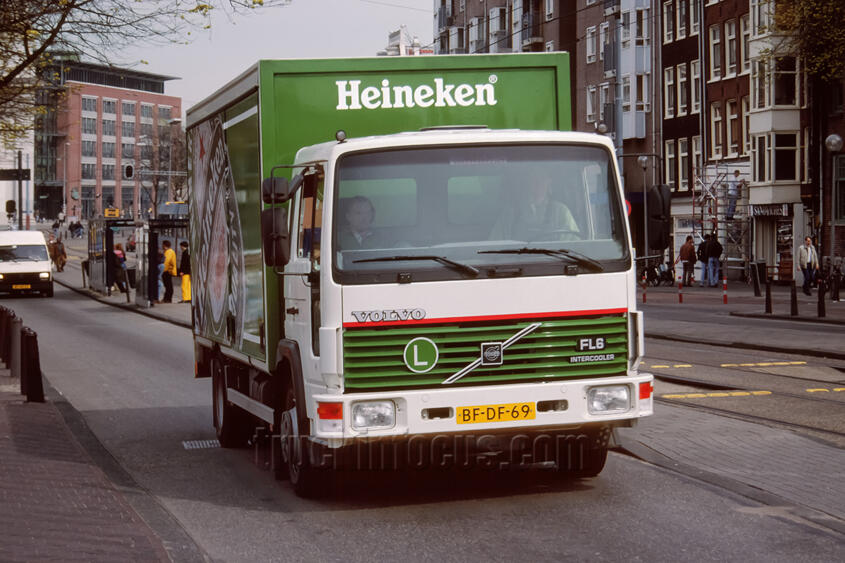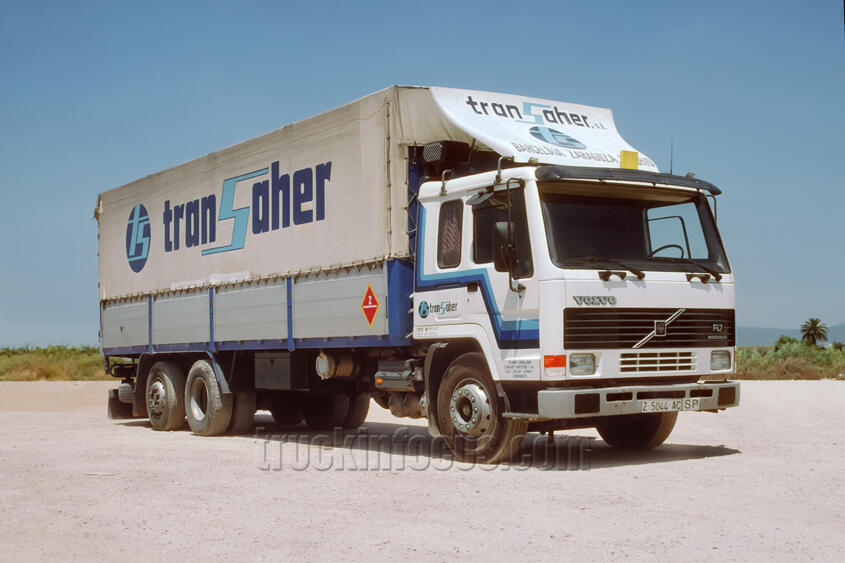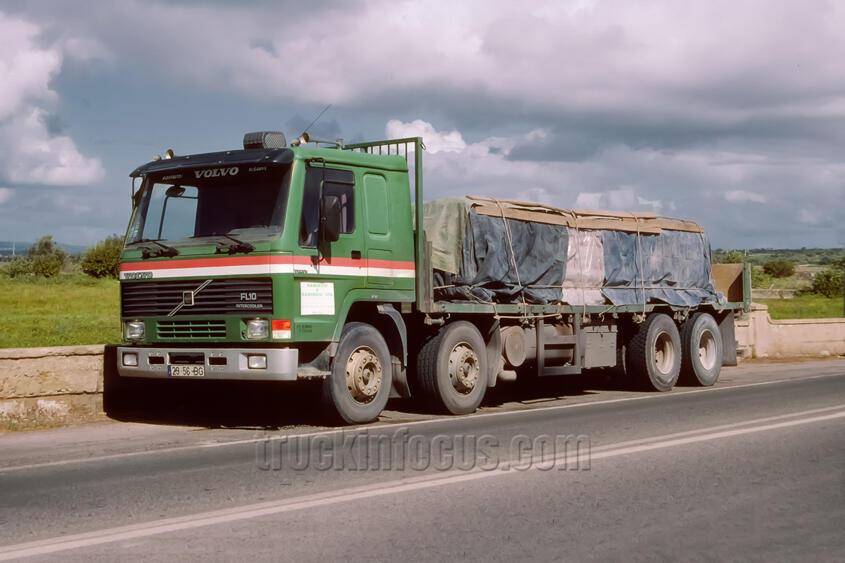The Volvo Chronicle
Page 7
By Christoph Büch (Berlin 2024)
From 1979, the second generation of the CH 230 for Switzerland represented a special feature in the Volvo truck range, where the maximum width for trucks was still only 2.30 meters until the early 1990s. The cab of the new CH 230 was no longer derived from the F 89, but was based on the F7. Raised fenders and a sheet metal section with cooling slits between the headlights were the visible distinguishing features.
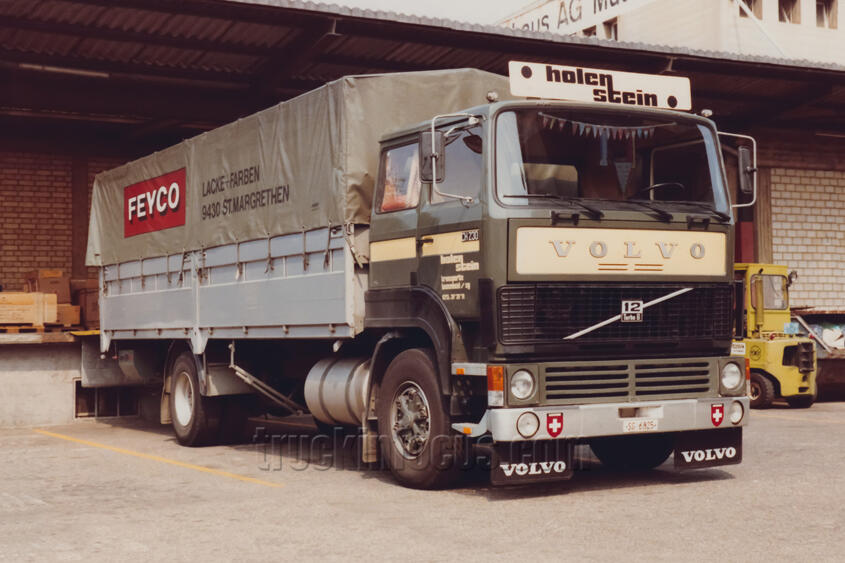
A further step toward strengthening the company's good position in international long-haul transport was the introduction of the Globetrotter cab for the F 10 and F 12 series at the IAA International Motor Show in Frankfurt am Main in 1979. The interior height of almost two meters enabled the crew to stand upright. Despite an additional weight of 190 kg and a considerable price premium, the Globetrotter cab was well received by the market. The competition had to follow suit in the next few years.
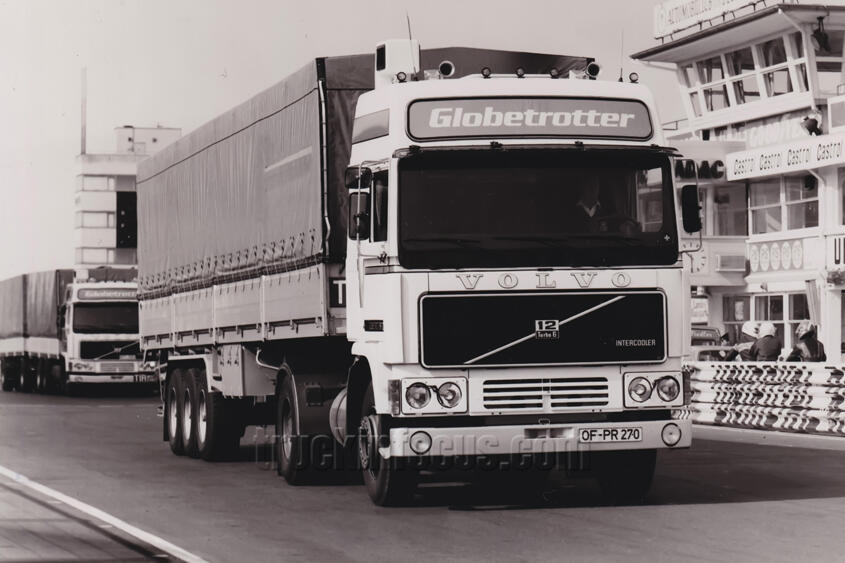
Volvo had become one of the leading manufacturers in Europe with its advanced yet solid technology. In 1981, the Gothenburg-based company delivered more than 28,000 vehicles, giving it a 14 percent share of the European heavy truck market. The Swedish manufacturer's export quota amounted to a proud 89 percent of production.
In 1981, Volvo significantly expanded its activities in the American market with the acquisition of the long-established manufacturer White. In the years before, the company had cooperated with Freightliner, but the takeover of Freightliner by Volvo's main competitor Mercedes-Benz in 1980 put an end to the arrangement with the Swedes. In the late seventies, Volvo had been successful in the U.S. market primarily in the under-15-ton mid-size class when it offered the Club of Four truck there. The acquisition of White now offered new opportunities in the heavy weight classes as well. In the years that followed, Volvo invested in expanding its dealer network and improving the quality of the White product range. This paid off after some difficult early years. Market share in the heavy-duty class rose from five to ten percent in 1986. Externally, the new owner's vehicles were recognizable from 1981 onward by the diagonal trim strip on the radiator grille. In 1987, an important step toward product alignment took place. From then on, all White vehicles could be ordered with an optional Volvo driveline. In addition, Volvo bought GMC's heavy truck business and offered General Motors trucks as White-GMC. The White takeover meant that by 1982 Volvo was already in second place worldwide behind market leader Mercedes-Benz in the heavy-duty class.
In the early 1980s, exterior modifications were made to Volvo's heavy-duty cab-over and conventional trucks. In the case of the conventionals, the cab was lengthened by 15 centimeters in 1981 and the radiator grille was now adorned with the oblique stripe typical of Volvo (model designation Mark II). In addition, the vehicles received new turn signals at the front corners. In 1983, the model designation moved from the center of the grille to the lower right corner (with intercooler badge) and there were now two towing eyes in the bumper instead of one. In 1987, a new grille with wider ribs and central Volvo logo arrived. The Volvo lettering on the top edge was omitted.

The grille of the F 10 and F 12 heavy cab-overs received the Intercooler emblem at the bottom right in 1981. Two years later, there was a facelift: the cab grew about six inches in height, with the roof above the windshield lowered slightly. The lower part of the grille between the headlights had only two horizontal openings instead of four. The F 10 was now available with intercooled engines of 299 hp.

In 1985, Volvo introduced the FL 4 and FL 6 series (the L stood for "low" because of the flat design with low entry height). The new cab, made largely of hot-dip galvanized sheet metal, was designed according to aerodynamic findings. With glazing also in the lower door area, it sat on a newly designed frame. Disc brakes were used for the first time. The four-cylinder diesel produced 122 hp, while the six-cylinder engine with a displacement of 5.47 liters produced between 152 and 207 hp with an intercooler. In the same year, Volvo introduced the FL 7 and FL 10 in the heavy medium class. With a different new cab, they replaced the F6 S and F7 models. This marked the end of even the enlarged Club-of-Four models for the Swedes. The engine of the FL 7 produced between 226 and 245 hp, while the heavier FL 10 received the complete powertrain of the F 10 with engines from 270 to 300 hp. This meant that the FL 10 could also be used for light long-haul transport. The F7 had already been used in a similarly universal way, especially in Great Britain. In 1995, the FL 12 extended the series to 380 and 420 hp. It was also available as a 6x4 and 8x4 version.
